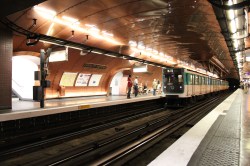
The best way to pull off this deception: tell your significant other that you’d want nothing more than a romantic week in Paris. Arrive in Paris, stash your bags, and then take either the number three or eleven Metro. When you get to the station that looks like the inside of a giant steam engine, Arts et Métiers, get out. You’re now ten Euros away from one of the coolest museums a hacker could visit.
A significant portion of modern science’s beginnings is sitting in the Musée, polished and beautiful. Most of them are housed in cabinets so old they’re part of the exhibit. Now, the Henry Ford museum in Detroit Michigan is a monument to industrialization, and cool in its own right, but it leaves some questions unanswered. We’re all spoiled by desktop CNCs, precision measurement tools for pennies, and more. How did we get here? How did they measure a shaft or turn a screw before precision digital micrometers? What did early automation look like? Early construction?
Also did I mention it has Foucault’s Pendulum? You know, the one that finally convinced everyone that the Earth rotated around an axis? No big deal.
The museum has a few permanent exhibits: instruments scientifique, matériaux, construction, communication, énergie, mécanique et transports.

Instruments Scientifiques was one of my favorites. Not only did it include old scientific instruments, it had sections containing some of the original experiments in optics, computation, and more. For example you can see not just one but a few original examples of Pascal’s Pascaline, arguably the first mechanical calculators in the modern era to be used by the layman for every day calculation, signed by Pascal. It’s also worth noting just how incredible the workmanship of these tools are. They’re beautiful.
Matériaux was initially a disappointment as I entered it from the wrong end. For me it started of with a tragically boring and simplistic display on recycling materials designed primarily to torture children on field trips. Luckily it quickly ramped into a fascinating display on materials manufacturing technology. How did we go from hand looms to fully automated Jacquard looms (of which you can see some of the first examples) to our modern day robotic looms? How did ceramic evolve? What was early steelmaking like? It’s very cool and models are all in beautiful condition.
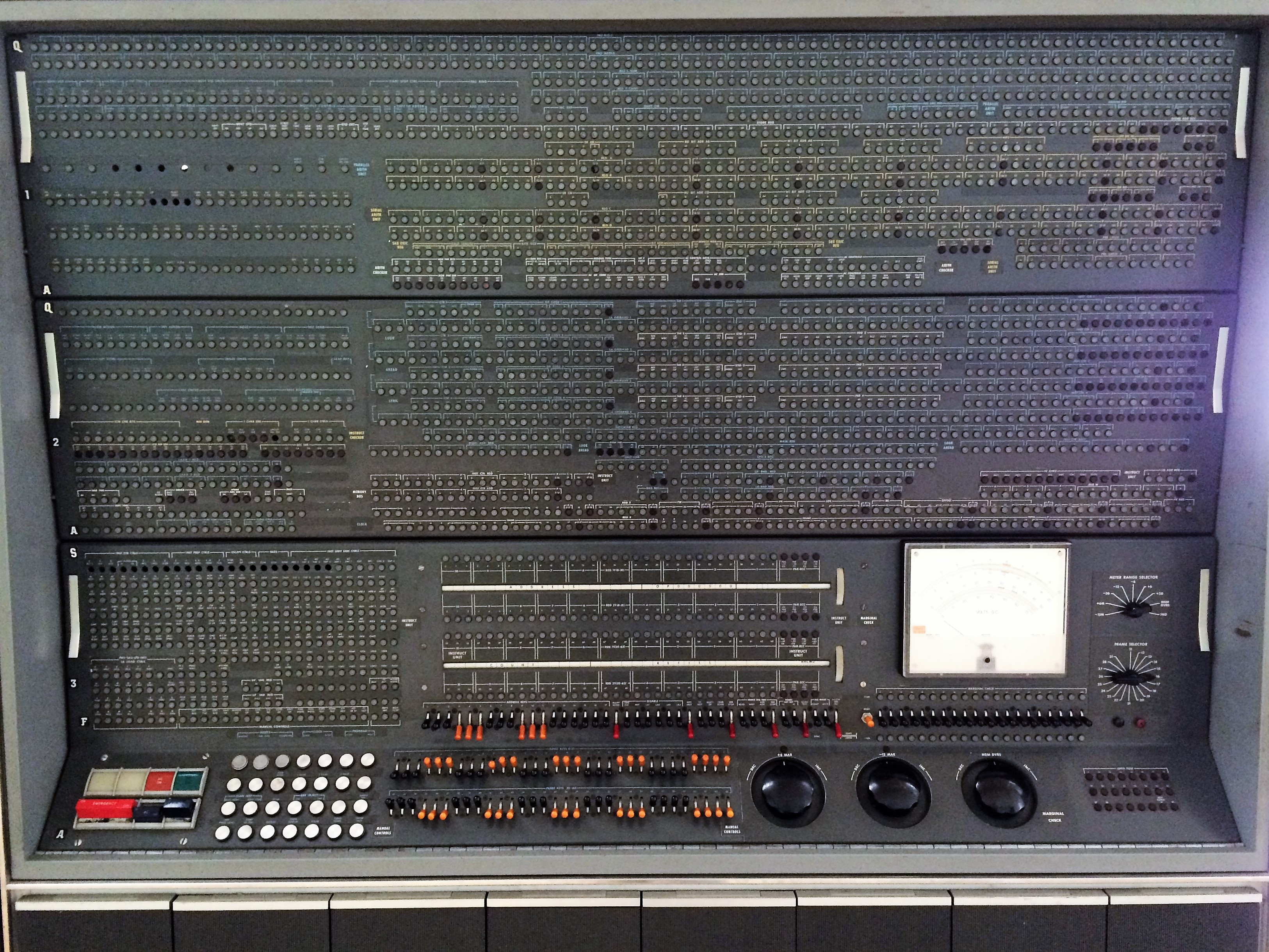
By the time I got to Communication I was reaching the limit of my endurance and also what you can fit into a single day of the museum. It’s a large building. It was packed through many of the early examples of computing, television, and space. There was quite a display of early camera equipment. You could get close enough to some truly massive old computers to smell the still off-gassing phenolics.
Construction held my interest for a long time. It’s not my usual interest, but after living in Paris for a month or so I was absolutely burning with curiosity. How did anyone without a single powered crane or vehicle build so many buildings out of stone? It’s packed for four rooms and two stores from floor to ceiling of beautiful little wood models explaining exactly how.
Énergie was quite cool. It followed the development of steam power for the most part. It started with primitive waterwheels. Moved on to turbines. Then showed the gradual increase in complexity until the the modern day. It had some internal combustion too, but much of that was reserved for the transports section of the museum. It also had some interactive displays to entertain children and Hackaday writers. However they were in desperate need of an oiling and this is by far the most ear-piercingly squeaky exhibit in the whole building.
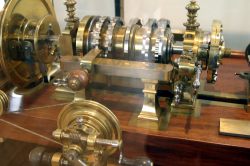
Mécanique is competing with instruments scientifique as my favorite exhibit. Have you ever wanted to see hundreds of examples of screw machines, old lathes, and the evolution of the milling machine? What about models of the factories that built steam engines or massive wagon wheels. They even had a lathe that belonged to a French king. Apparently he thought metalworking was the way to get in touch with the common people.
Transports was a nice exhibit, but it fell a little short for me since I’d been to the aforementioned Henry Ford museum. However, it covered the history of some of the European automobile manufacturers pretty well. Had a nice section on trains and subways. And even had some models of the ships used in the European Space Agency.
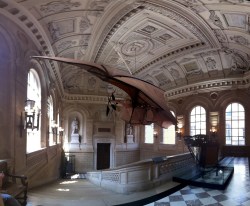
The last exhibit is the museum itself. It’s an historic building. It was originally built as a school for training engineers in 1794 but as the school grew out of it, it slowly transformed into the museum it is today. The architecture is beautiful. It’s adorned in stone and statue like all the French museums. It also has sections cut out in some of the higher storeys of the building so you can see how it was constructed.
Part of its beauty is also related to the school swallowing up the Priory of Saint Martin des Champs (Google translate does a great job if you don’t read French). The Priory is a beautiful old church, founded in 1079. It was home to the last trial by combat the country would see. You can piece together the story between the two pages dedicated to the combatants Jean de Carrouges and Jacques Le Gris.
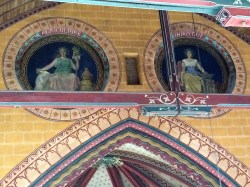
The final display in the museum is in the church. It holds Foucault’s pendulum, dangling from the center of the sanctuary. If you get there early enough in the day you may get to watch it knock over a peg or two and prove the rotation for yourself.
Rather than the statues of the saints there are statues of the muses of Industrie and Agriculture. The hall is filled with more exhibits. There are cutaway original automobiles. A model of the Statue of Liberty. A catwalk lets you take a high view of the surroundings. It is also beautiful in and of itself. The church is well maintained and painted in the style original to them.
If you find yourself in Paris with a few hours (or days) to spare I highly recommend this museum. Any technical person would be hard pressed to leave uninspired and unawed by the display. It’s good to get a perspective on the past.
Featured Photo CC: Roi Boshi
















It’s a really cool Museum, lots of wonderful artifacts. Definitively worth a trip, despite tha fact that Paris is right around it. So pack time, plenty of time, for the muesum and more for Paris.
The machine sublabled “A lathe fit for a king!” is actually a Rotary Guilloche (rotary engraving machine) This type is still in use for dials in watchmaking.
Thank you for this article. Sometime in the near future i’m going to go to paris for the weekend and visit the musee for myself :)
Not being a francophile (pardonne moi) I think this could entice me to visit Paris.
You might prefer this museum then:
http://www.deutsches-museum.de/index.php?L=1
I spent three months in Munich, living about 5 blocks from the Deutsches Museum. It’s an amazing place.
Not to forget that the people over there ‘ave an outrageoush accènt’ :)
PS if you still have it : don’t forget your student pass for discounts…
This makes me wonder if the HAD community might be interested in a feature piece on the watch museum in La Chaux-de-Fonds, Switzerland. Not nearly the same variety of ‘old stuff’ (only clocks and watches), but they’ve got the most amazing mechanics. Gerrit, if you fancy a trip to Neuchâtel, let me know. :)
We’ve also got these:
https://en.wikipedia.org/wiki/Jaquet-Droz_automata
What kind of computer is that a photo of?
I wondered that too – it’s an IBM 7030 Stretch, their first transistorised computer. “Its failure to meet its aggressive performance estimates forced its price to be dropped from $13.5 million to only $7.78 million and its withdrawal from sales to customers beyond those having already negotiated contracts. Even though the 7030 was much slower than expected, it was the fastest computer in the world from 1961 until the first CDC 6600 became operational in 1964.”
That lathe is a Rose engine lathe, it is for ornamental turning of wood. Modern one here: https://www.youtube.com/watch?v=Ie0yMhjpfII
About the metro station Arts et metiers
The cupper one is on line 11. The inspiration is Jules Vernes Nautilus .
And CNAM is also some kind of University.
Nice to see Clement Aders model 3 steampunk airplane. I have a picture of it on my phone background. He also demoed stereo sound in 1881!
While in Paris, you can also try the Palais de la decouverte, make sure you see the electricity demos they have a 300000 volts generator and make huge sparks https://www.youtube.com/watch?v=ol7MpkU0fGo
This is a nice museum, albeit a little bit messy sometimes. Among other things to see, the first self-propelled mechanical vehicle (https://en.wikipedia.org/wiki/Nicolas-Joseph_Cugnot) and what is, for some people (mainly Frenches!), the first plane (https://en.wikipedia.org/wiki/Ader_%C3%89ole).
About planes, the “Musée de l’air et de l’espace” is also interesting (https://en.wikipedia.org/wiki/Mus%C3%A9e_de_l%E2%80%99air_et_de_l%E2%80%99espace), mainly for some strange French experimental planes.
This is my favourite museum. Forget the (otherwise quite nice) Louvre and the strangely-painted Pompidou Centre and the other places the tourist guides rave about. This museum is the single most visit-worthy building in Paris. Interestingly, they do have a number of items, the full significance of which they do not seem to quite understand (judging by the labels); and I note instances of that in the comments above. They have, for example, an item they simply describe as a fusee engine (for cutting fusees for clocks) but it is actually the earliest example of of a screw-cutting machine which features infinitely variable settings for the lead of the screw. Gobsmacking or what?
Lovely place, highly recommended. And don’t miss the large display demonstrating the development of artificial joints for knees, elbows etc. Great lesson in properties of materials.
10 Euros is a nice price for the ride